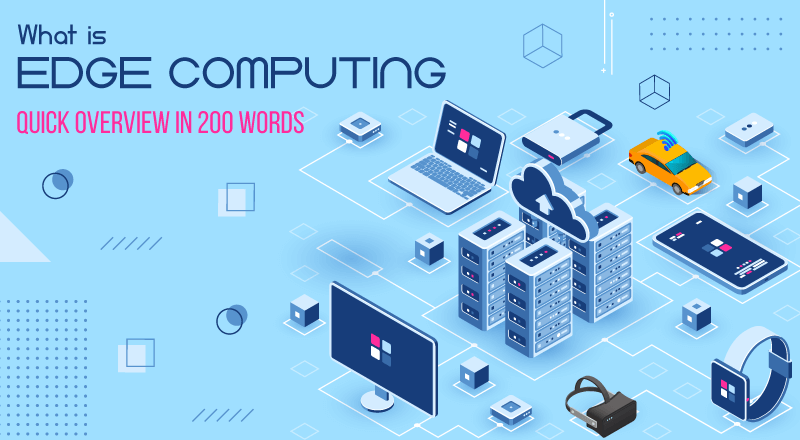

October 25, 2019
June 29th, 2023
 The number of IoT devices is expected to grow to 10 billion by 2020 and 22 billion by 2025 – [source]
The number of IoT devices is expected to grow to 10 billion by 2020 and 22 billion by 2025 – [source]
With many devices connected to the internet, the cloud alone can’t handle massive data.
Edge computing can solve that problem.
Instead of processing data in the cloud or data centers, edge computing processes heap of data at the edge (at which it is originated).
This means edge devices like edge router, sensor-based devices, etc. act as small data centers to process, store & communicate crucial data.
It is useful in the scenario where:
It reduces long-distance communication and business can have real-time insights from the remote location, can make better decisions, and even reduces security risks.
Amazon, Dropbox, GE, etc. are already using this modern technology to scale up their business.
Every company will need edge computing at its core technology as Gartner pointed out that, edge computing combined with AI can drive innovation and engagement.
It is one of the top technology trends forming the foundation for next-gen of digital business.
A Good Read: Edge Computing Explained With Examples
SPEC INDIA is your trusted partner for AI-driven software solutions, with proven expertise in digital transformation and innovative technology services. We deliver secure, reliable, and high-quality IT solutions to clients worldwide. As an ISO/IEC 27001:2022 certified company, we follow the highest standards for data security and quality. Our team applies proven project management methods, flexible engagement models, and modern infrastructure to deliver outstanding results. With skilled professionals and years of experience, we turn ideas into impactful solutions that drive business growth.
SPEC House, Parth Complex, Near Swastik Cross Roads, Navarangpura, Ahmedabad 380009, INDIA.
This website uses cookies to ensure you get the best experience on our website. Read Spec India’s Privacy Policy